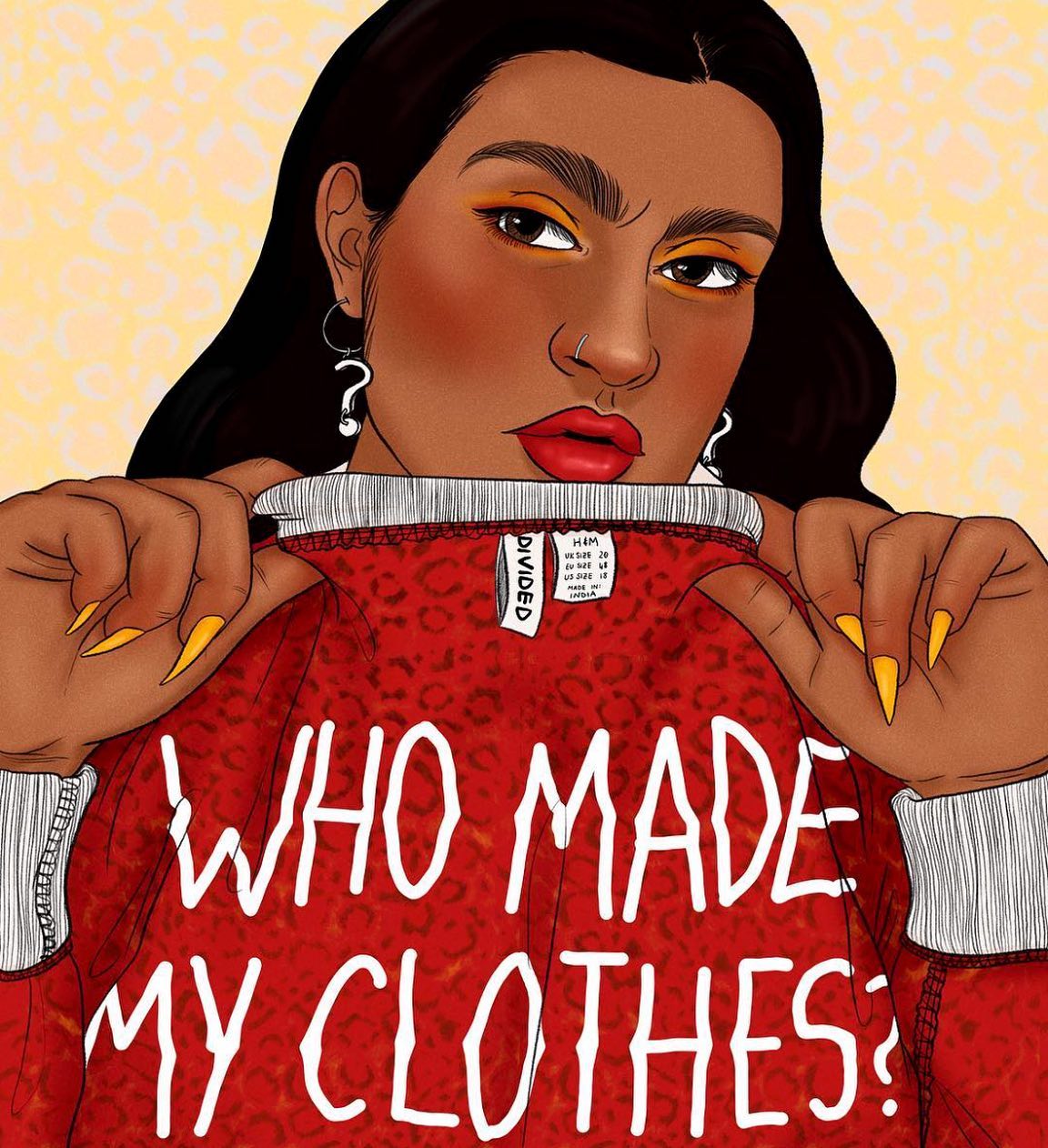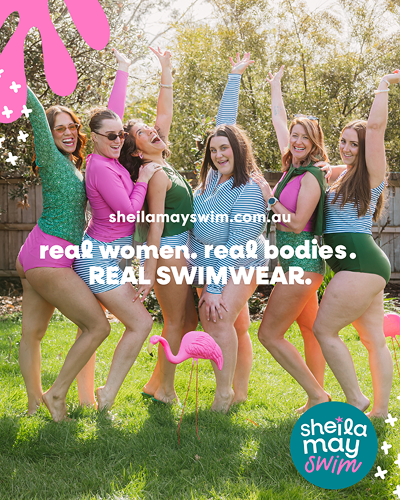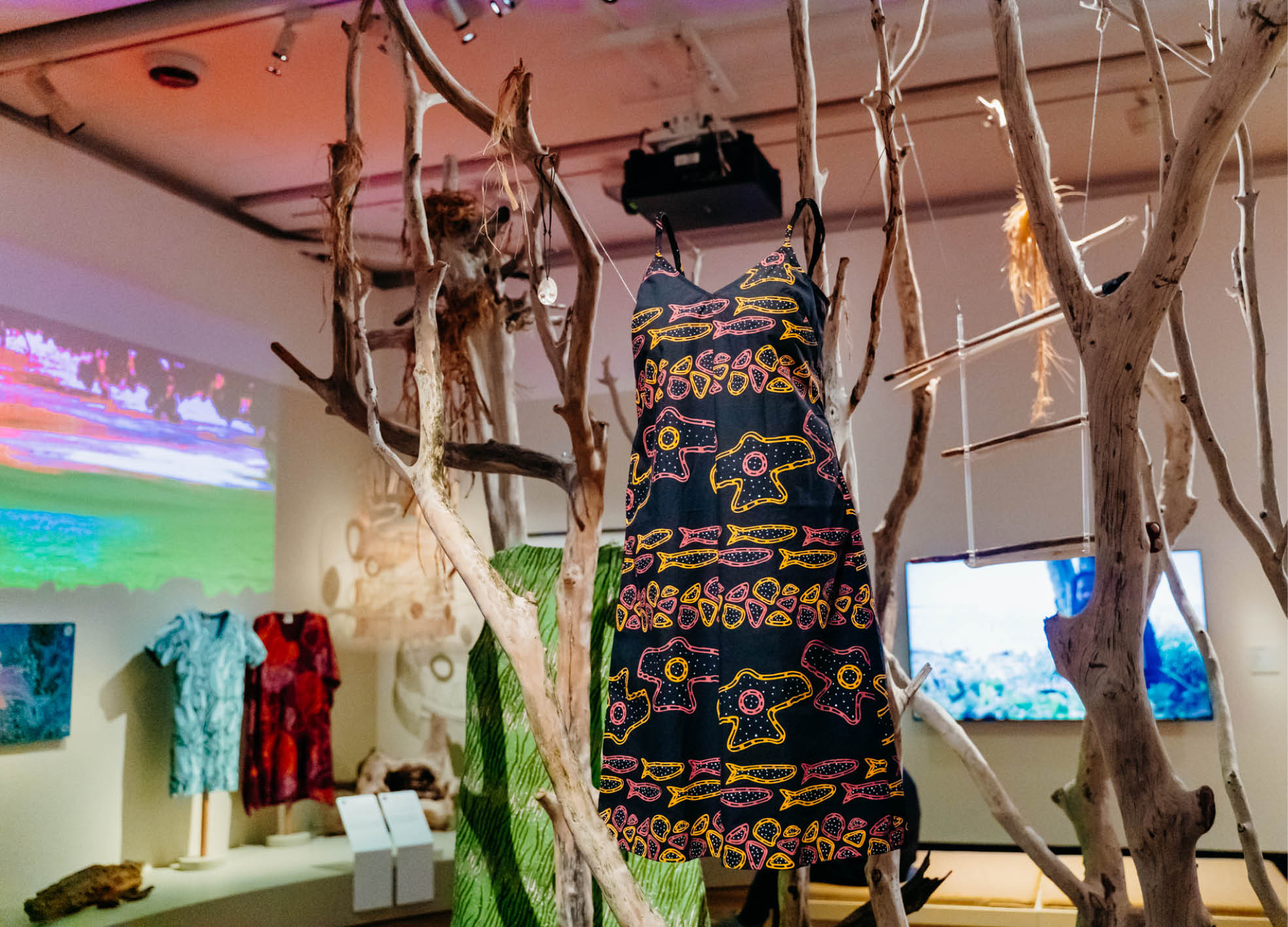Why the Fashion Revolution Must be Intersectional

- Words by Peppermint
words TANESHIA ATKINSON top image via FASHION REVOLUTION
Fashion Revolution Week is a time when we come together as a global community to demand a better fashion industry. Here Yorta Yorta writer Taneshia Atkinson explains why this revolution must be intersectional.
Intersectional activism should be central to any revolution. Without it, we risk further perpetuating white supremacy.
Fashion is undeniably powerful. It makes us feel good. The industry is bold, exciting, captivating, and influential. Fashion has the power to strengthen identities, cultivate a sense of unity and call worldwide attention to social issues. Yet fast fashion is inherently linked to racism and white supremacy.
2013 saw one of the worst industrial disasters in history following the collapse of the Rana Plaza Building in Bangladesh. Sadly, more than 1100 people died and another 2500 were injured, many of whom were women of colour. This is when Fashion Revolution was born, quickly becoming the largest fashion activism movement in the world. Fashion Revolution envisions a global fashion industry that conserves and restores the environment and values people over growth and profit.
Women of colour make up 80% of the 74 million textile workers worldwide.
Women of colour make up 80% of the 74 million textile workers worldwide yet despite this, the faces of ethical fashion and sustainability remain mostly white and affluent and are deep-rooted in privilege. This leads us to an important point. We can’t talk about a fashion revolution without discussing the important role of intersectionality.

IMAGE: ILLUSTRATION BY ANSHIKA ‘ASH’ KHULLAR.
Intersectionality is “the interconnected nature of social categorisations such as race, class, and gender, regarded as creating overlapping and interdependent systems of discrimination or disadvantage”. The concept of intersectionality reinforces that not all oppression is created equal and forms of oppression can accumulate. A Black trans woman, for example, may experience sexism, racism, and transphobia. But a white cis woman may look to only revolt against sexism, which risks silencing the impact of other intersections.
Without intersectional activism, we see the ironic mass production of ‘girl power’ slogan tees made by the same people who exploit women of colour.
Everything from the food we consume to the way we dress ourselves is entwined with a system of oppression off the backs of… people of colour.
The exploitation of women of colour is further exacerbated as fast fashion companies continue to benefit from systemic racism and economic vulnerability. As writer and fashion consultant Aja Barber says, “Everything from the food we consume to the way we dress ourselves is entwined with a system of oppression off the backs of… people of colour.” To support this statement, an Oxfam report in 2019 found that just 1% of Vietnamese garment workers earned a living wage, and Bangladeshi garment workers didn’t earn a living wage at all.
In addition to the exploitative use of cheap labour and unsafe working conditions, fast fashion companies benefit dramatically from environmental racism. Years of overproducing clothing in an unsustainable way has had a catastrophic impact on the environment, further marginalising communities of colour worldwide. During the textile dyeing process, chemical dyes end up in water sources that communities of colour depend on for survival. In China, 70% of the rivers and lakes are contaminated by 2.5 billion gallons of wastewater from the textile and dye industry with a similar impact in Bangladesh, Indonesia and India. In wealthier countries, like the United States and Australia, people of colour often live and work in some of the most polluted and industrialised areas.
As clothing labels seek to meet the demands of fast fashion, communities of colour across the world suffer and this disproportionate impact cannot be ignored.
As tempting as it may be to point the finger at consumers, it is important to recognise that consumers are not solely responsible. Many low-income families worldwide rely on fast fashion, and the ‘vote with your dollar’ concept only works for people with a disposable income. Sustainable and ethical fashion should not be a privilege.
So how can you get involved?
If you are in a position to do so, decolonise your wardrobe and buy from ethical and Black-owned brands. This is also a great way to spark important conversations!
Diversity should extend beyond textiles. Call out the lack of diversity in the fashion industry from leadership roles to designers, models and board members.
The face of sustainability is white and affluent. Challenge the narrative! Listen to and amplify Indigenous voices. Indigenous people worldwide are the original land caretakers, life givers and matriarchs of sustainability.
Use your digital activism. Ask the brand #WhoMadeMyClothes and #WhatsInMyClothes and don’t underestimate the power of writing to your local member of parliament.
The Fashion Revolution has some other great ideas on how to be a Fashion Revolutionary and use your voice to make change.
JOIN OUR MAILING LIST
Brighten up your inbox with our not-too-frequent emails featuring Peppermint-related news, events, competitions and more!
explore
More articles
Furred, feathered, fishy, scaled… The pets we choose are as diverse as our personalities. (And apparently, quite often we resemble each other.) But they all deserve to be cared for in ways guaranteed to keep them safe, healthy, and happy.…
When you hang a painting on a wall, the story stays put. But when you wear a beautifully made garment that may as well be…
We all do it: fire up the car for a 5-minute drive to pick up groceries, drop off sewing supplies, or run a quick errand…
Here’s a question: who decided that natural fibres aren’t a great fit in activewear? For Geraldton mum-of-four Jade Payne, that question became paramount after a…
It’s beginning to look a lot like Christmas! And around here, that means mindful spending and meaningful gifts that last. Sure, this approach requires a…
When the algorithm gods reward dance trends over hand-thrown ceramics, and building a website feels more stressful than a tax return, where’s a maker to…
Hang out with us on Instagram
IT’S HERE! 🎉
Our fabulous new website is now live. To say we’re excited about this is an understatement.
Last year we were extremely excited to receive funding from the Meta Australian News Fund, in partnership with the Walkley Foundation. The result is this incredible new website from the amazing Amy and Jenny at @CrumpetClubHouse - massive round of applause! 👏🏼👏🏼👏🏼
Early next year we’ve got a sustainable fashion and sewing directory coming after YEARS of wanting to make it happen - we’re still working hard behind-the-scenes on that.
Go have a play on our new website and let us know what you think! And while you’re there, snap up a subscription or a sewing pattern… perfect for the gifting season!
www.peppermintmag.com
#PeppermintMagazine #CrumpetClub #NewWebsite #WhoDis #ChristmasGifts #SupportSmallBusiness

“Crafting is something that has come naturally since I was small and I just haven’t stopped. When I was smaller, I was interested in the end result. As I’ve gotten older, I realise it’s the process that keeps me coming back to craft. It’s a meditative state for me and I find the repetitive action of the stitching and felting quite therapeutic.”
Craving a world filled with warmth and whimsy? It’s all in a day’s work for textile artist @Cat_Rabbit, whose latest book, ‘Trinkets’, is bursting with felty food friends to make and cherish. Cat invited us into her universe, filled with cheeky characters, layered storytelling and loads of humour.
Plus: try the super sweet pattern for Cat’s Lucky Pickle, perfect to make as a stocking stuffer, extracted from Trinkets.
Read more from our ‘Just felt right’ feature in Issue 64, at newsagents and stockists now!
Photos: Tatanja Ross @On_JacksonStreet and Cat Rabbit
#PeppermintMagazine #CatRabbit #LuckyPickle #Craft #Crafting #Felting #FeltCrafts #Trinkets #ChristmasDecorations

Our hearts go out to everyone impacted by the Bondi Beach violence, especially the Jewish community. Also to the beachgoers, those who bravely helped and the first responders.
While it`s easy – and understandable – to get caught up in the horror of it all and direct anger at certain groups, remember this quote from teacher and author Erin Gruwell: "Don`t let the actions of a few determine the way you feel about an entire group."
“You don`t fight racism with racism. You fight racism with solidarity," said Bobby Seale of the Black Panthers. And solidarity is exactly what we need right now.
If you are feeling overwhelmed, you are not alone. Remember there is much more kindness in the world than hate. ❤️🩹
@LifelineAustralia has created a Bondi Beach Incident: Wellbeing support guide, where you’ll find information about common reactions, reassurance that what you’re feeling is valid, and ideas for taking care of your wellbeing.
https://lifeline.org.au/bondi-incident
You can also call Lifeline on 13 11 14, text on 0477 13 11 14 or chat at lifeline.org.au/crisis-chat anytime, no matter how this has impacted you.
@BeyondBlueOfficial is also available with free 24/7 support by phone on 1300 22 4636 or webchat at https://www.beyondblue.org.au/
Register.Find.Reunite. has been activated by @RedCrossAu to help people reconnect with family and friends. Visit redcross.org.au to access the service.
@NSWPolice Public Information and Inquiry Centre (PIIC) is operating 24/7 on 1800 227 228 for information relating to people impacted.
@LifeBloodAu is supporting Sydney hospitals. O- and O+ blood are always in high demand in emergencies. To donate (from anywhere in Australia – all states are welcome and helpful!) call 13 14 95 or use the Lifeblood app.

Just a reminder… from @SugarHouseCeramicCo
This holiday season be kind, patient and shop local!
#ShopSmall #ShopLocal #SupportSmallBusiness

✨️ Our website is getting a glow-up! ✨️
Sorry for the inconvenience but it will be offline for a few days. You can still purchase subscriptions (perfect for chrissy presents!) via the links on the holding page.
Last year we were extremely excited to receive funding from the Meta Australian News Fund, in partnership with the Walkley Foundation. The result of this is a fabulous new website, with a sustainable fashion and sewing directory that will follow early next year. We`ve worked with the lovely Amy and Jenny at @CrumpetClubHouse who have been making the magic happen – we can`t wait to show you the outcome! ✨️
In the meantime, please get in touch if you need help with anything – hello@peppermintmag.com
We`ll see you on the other side! 🌈

🎀 12 DAYS OF XMAS GIVEAWAYS 🎀
🎄On the 12th day of Christmas, we’re giving away… a GREENPAN FROST ICE CREAM & FROZEN DRINK MAKER! 🎄
Ice, ice, baby! Calling all kitchen magicians and dessert devotees: it’s time to churn, blend and devour your way to frozen heaven. It’s our final giveaway – and hoo girl, it’s a goodie! Thanks to the clever folks at @TheOriginalGreenPan.Anz, one reader will cool their mitts on the Frost Ice Cream & Frozen Drink Maker – perfect for conjuring up home-made gelato, sorbet, smoothies, slushies and more!
Valued at $599, the Frost Ice Cream & Frozen Drink Maker is designed with GreenPan’s signature Thermolon™ ceramic non-stick coating, so you can whip up summer-ready sweet treats free of PFAS, PFOA, lead and cadmium.
To snag this frosty prize, follow @TheOriginalGreenPan.Anz and tag a friend in the comments below before midday AEST 15 December! (Australian and New Zealand addresses only, please.) Good luck!
Update: The lucky winner of our final giveaway is @just__for__van - congrats! We`ll dm to get your details. Well done! 🎉
#PeppermintMagazine #12DaysOfChristmas #12DaysOfGiveaways #GreenPan
















